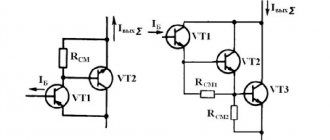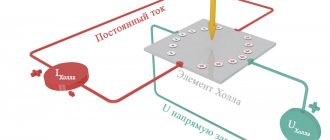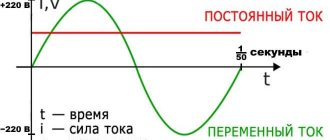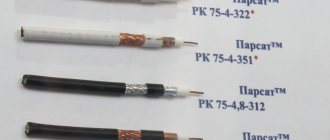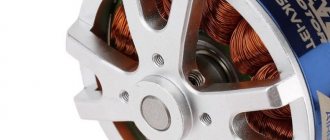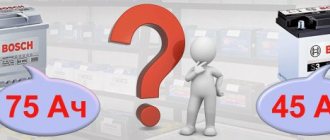What is the difference between a conductor and a semiconductor?
It is known that in a substance placed in an electric field, when exposed to the forces of this field, a movement of free electrons or ions is formed in the direction of the field forces.
In other words, an electric current occurs in the substance. The property that determines the ability of a substance to conduct electric current is called “electrical conductivity.” Electrical conductivity is directly dependent on the concentration of charged particles: the higher the concentration, the more electrical conductivity it is.
According to this property, all substances are divided into 3 types:
- Conductors.
- Dielectrics.
- Semiconductors.
Electrostatic induction
Any body placed in an electric field becomes electrified. However, the electrification process will be different for different substances.
The electrical characteristics of an electrically neutral body depend on the mobility of charged particles in it, which is determined by the structure of the atoms of the substance and their relative arrangement.
Based on the concentration of free charged particles in a substance, all substances are divided into three main classes: conductors, dielectrics and semiconductors. Conductors include substances containing charged particles that can move in an orderly manner throughout the entire volume of a body under the influence of an electric field - the so-called free charges. Conductors are all metals, aqueous solutions of salts, acids, alkalis, molten salts, ionized gases.
Let us consider the behavior of only solid metal conductors in an electric field. In metals, the carriers of free charges are free electrons. They are called conduction electrons. Free electrons participate in thermal motion and can move through a piece of metal in any direction.
Let's place an uncharged metal conductor in a uniform electrostatic field.
Under the influence of the field, an ordered movement of free electrons will arise in it in the direction opposite to the direction of the intensity Ē of this field. Electrons will accumulate on one side of the conductor and form an excess negative charge there, and their shortage on the other side of the conductor will lead to the formation of an excess positive charge there, that is, charge separation will occur in the conductor. These uncompensated opposite charges appear in the conductor only under the influence of an external electric field, that is, such charges are induced (reduced). But in general the conductor remains uncharged. We are convinced of this by removing the conductor from the electric field.
The type of electrification in which, under the influence of external electric fields, a redistribution of charges occurs between parts of a certain body is called electrostatic induction.
Uncompensated electric charges that appear on opposite parts of the conductor create their own electric field inside the conductor with intensity Ēin. The directions of the external and internal fields are opposite:
Conductor in an external electric field
As a result of the movement of free charge carriers and their accumulation on opposite parts of the conductor, the internal field strength Ē increases and, finally, equals in magnitude with the external field strength Ēext. This causes the resulting field strength inside the conductor to be zero. In addition, a balance of charges is established on the conductor.
Description of conductors
Conductors have the highest electrical conductivity of all types of substances. All conductors are divided into two large subgroups:
- Metals (copper, aluminum, silver) and their alloys.
- Electrolytes (aqueous solution of salt, acid).
In substances of the first subgroup, only electrons are capable of moving, since their connection with the nuclei of atoms is weak, and therefore they are quite easily detached from them. Since the occurrence of current in metals is associated with the movement of free electrons, the type of electrical conductivity in them is called electronic.
Parallel connection of conductors
Of the conductors of the first subgroup, they are used in windings of electric machines, power lines, and wires. It is important to note that the electrical conductivity of metals is influenced by its purity and the absence of impurities.
Movement of electric current
In substances of the second subgroup, when exposed to a solution, the molecule disintegrates into positive and negative ions. Ions move due to the influence of an electric field. Then, when current passes through the electrolyte, ions are deposited on the electrode, which is lowered into this electrolyte. The process when a substance is released from an electrolyte under the influence of an electric current is called electrolysis. The electrolysis process is usually used, for example, when a non-ferrous metal is extracted from a solution of its compound, or when covering the metal with a protective layer of other metals.
Description of dielectrics
Dielectrics are also commonly called electrical insulating substances.
All electrical insulating substances have the following classification:
- Depending on their state of aggregation, dielectrics can be liquid, solid or gaseous.
- Depending on the methods of production - natural and synthetic.
- Depending on the chemical composition - organic and inorganic.
- Depending on the structure of the molecules - neutral and polar.
These include gas (air, nitrogen, SF6 gas), mineral oil, any rubber and ceramic substance. These substances are characterized by the ability to polarize in an electric field . Polarization is the formation of charges with different signs on the surface of a substance.
Dielectrics contain a small number of free electrons, and the electrons have a strong connection with the nuclei of atoms and are only rarely detached from them. This means that these substances do not have the ability to conduct current.
This property is very useful in the production of products used for protection against electric current: dielectric gloves, mats, boots, insulators for electrical equipment, etc.
Zone theory
Band theory describes the presence or absence of free charge carriers relative to certain energy layers. An energy level or layer is the amount of energy of electrons (atomic nuclei, molecules - simple particles), they are measured in Electron Volts (EV).
The image below shows three types of materials with their energy levels:
Note that for a conductor, the energy levels from the valence band to the conduction band are combined into a continuous diagram. The conduction band and valence band overlap each other, this is called the overlap zone
Depending on the presence of an electric field (voltage), temperature and other factors, the number of electrons may change. Thanks to the above, electrons can move in conductors, even if they are given some minimal amount of energy.
A semiconductor has a certain band gap between the valence band and the conduction band. The band gap describes how much energy must be supplied to a semiconductor for current to flow.
In a dielectric, the diagram is similar to the one that describes semiconductors, but the only difference is the band gap - it is many times larger here. The differences are due to the internal structure and substance.
We looked at the main three types of materials and gave their examples and features. Their main difference is their ability to conduct current. Therefore, each of them has found its own field of application: conductors are used to transmit electricity, dielectrics are used to insulate live parts, semiconductors are used for electronics. We hope the information provided has helped you understand what conductors, semiconductors and dielectrics are in an electric field, as well as how they differ from each other.
Electronic devices use a variety of materials. The main elements used for these devices are conductor and semiconductor products. To use them more effectively, you need to know exactly how conductors differ from semiconductors. The properties of each element, used in combination, make it possible to create devices with unique qualities and characteristics.
About semiconductors
A semiconductor acts as an intermediate substance between a conductor and a dielectric . The most prominent representatives of this type of substances are silicon, germanium, and selenium. In addition, these substances are usually classified as elements of the fourth group of Dmitry Ivanovich Mendeleev’s periodic table.
Semiconductors: silicon, germanium, selenium
Semiconductors have additional "hole" conductivity, in addition to electronic conductivity. This type of conductivity depends on a number of environmental factors, including light, temperature, electric and magnetic fields.
These substances contain weak covalent bonds. When exposed to one of the external factors, the bond is destroyed, after which free electrons are formed. In this case, when an electron is removed, a free “hole” remains in the covalent bond. Free “holes” attract neighboring electrons, and so this action can be carried out indefinitely.
The conductivity of semiconductor substances can be increased by introducing various impurities into them. This technique is widespread in industrial electronics: in diodes, transistors, thyristors. Let us consider in more detail the main differences between conductors and semiconductors.
What is the difference between a conductor and a semiconductor?
The main difference between a conductor and a semiconductor is its ability to conduct electric current. For the conductor it is an order of magnitude higher.
When the temperature value rises, the conductivity of semiconductors also increases; The conductivity of conductors becomes less as it increases.
In pure conductors, under normal conditions, when a current passes, a much larger number of electrons are released than in semiconductors. At the same time, the addition of impurities reduces the conductivity of conductors, but increases the conductivity of semiconductors.
Difference Between Conductor, Semiconductor and Insulator
The fundamental difference between a Conductor, a Semiconductor and an Insulator depends on their level of conductivity. Conductors are materials that allow electric current to flow easily, hence have high conductivity, Semiconductors are materials that have moderate conductivity, whereas insulators are materials that prevent charge from flowing through them, and thus have low conductivity.
The conductivity of solids is the main factor that distinguishes these three materials and the differences in their conductivity are explained by Electronic Band Theory. In addition, conductors - have very low resistance, semiconductors - pure semiconductors have very high resistance, and insulators - have extremely high resistance. However, there are some other differences between Conductor, Semiconductor and Insulator.
Content
- Overview and main differences
- Band theory of conduction
- Conductors
- Insulators
- Semiconductors
- What is the difference between Conductor, Semiconductor and Insulator
- Conclusion
Band theory of conduction
Electrons orbit the positive nucleus of an individual atom at acceptable energy levels, as shown by the gray lines on the left in the diagram below. In a large collection of atoms, such as a metal wire or a semiconductor crystal, the energy levels reorganize into two bands. The conduction band is the zone of higher energy levels of electrons, and the valence band is the zone of lower energy levels of electrons. In the energy “gap” between the bands, electrons cannot exist.
On the left side are horizontal lines that move closer together as energy levels increase
Conduction is the movement of electrons in a solid. For conduction to exist, electrons must move freely in the conduction band and there must be spaces in the energy bands for electrons to move.
Conductors
There are no band gaps between the valence and conduction bands in a conductor. In some metals, the conduction and valence bands partially overlap. This means that electrons can move freely between the valence band and the conduction band.
The conduction band is only partially filled. This means that there are places for electrons to move. When electrons for the valence band move into the conduction band, they are free to move. This allows the conductor to conduct electrical current.
Zones in conductors
Insulators
The insulator has a large gap between the valence band and the conduction band. The valence band is full because no electrons can rise to the conduction band. As a result, the conduction band becomes empty. Since there are no electrons in the conduction band of an insulator, and only electrons can move easily in the conduction band, the material cannot conduct electric current.
Zones in isolation wards
Semiconductors
In a semiconductor, the gap between the valence band and the conduction band is smaller. At room temperature, there is enough energy to move some electrons from the valence band to the conduction band. This allows for some conductivity. Increasing the temperature increases the conductivity of the semiconductor because more electrons will have enough energy to move into the conduction band.
Dielectrics.
Rice. 2
At T
= 0 valence electrons completely fill the lowest band, called
the valence band
(Fig. 2).
There are no free levels in it, and the next allowed band, the conduction band
, is separated from it by a wide band gap. If an electric field is applied to such a sample, it will not be able to accelerate the electrons, that is, create an electric current, since accelerating an electron means giving it additional energy, and, according to the laws of quantum mechanics, this can only be done by transferring it to a higher energy level . But the Pauli principle prohibits electrons from occupying already occupied levels, and they cannot enter the next allowed band, which is completely empty, because the energy received from the electric field is much less than the width Δ of the band gap.
At temperatures other than zero, electrons, in principle, can move into the conduction band and become carriers of electric current. However, in order for the number of electrons transferred to this zone to be large enough, the dielectric must be heated to such a high temperature that it melts before the current reaches a measurable value. At room temperature, practically no current flows in the dielectric.
Conductors, insulators and semiconductors
Any body consists of molecules and atoms. An atom contains negatively charged electrons and a positively charged nucleus. Electrons in an atom perform orbital rotations around the nucleus. If the sum of negatively charged electrons is equal to the positive charge, then the atom is considered electrically neutral . In the periodic table, the atomic number of an element is determined by the number of electrons of an atom with a neutral charge. The electric charge of an electron is -1.6*10 -19 C. The absolute value of the nuclear charge is equal to the charge of the electron multiplied by the number of electrons of the atom with a neutral charge.
The electrons of atoms are usually located in outer or inner orbits. Those electrons located in the inner orbits are relatively tightly bound to the nucleus of the atom. Valence electrons, i.e. those in outer orbits can break away from the atom and remain in a “free” state until they attach to a new atom. An atom that is missing any number of electrons is called an ion with a positive charge. But an atom to which electrons have attached is called an ion with a negative charge.
The process of ion formation is called ionization . The number of “free” ions or electrons, i.e. charge-carrying particles per unit volume of a substance is called charge carrier concentration . Electric current is the ordered movement of positively and negatively charged particles. Electrical conductivity is the ability of a substance, under the influence of an electric field, to conduct electric current through itself.
The higher the concentration of charge carriers in a substance, the greater its electrical conductivity. Depending on their ability to conduct electric current, substances are divided into 3 groups: conductors, semiconductors and dielectrics.
Conductors of electric current
Conductors are substances with high electrical conductivity. There are 2 types of conductors: with electronic conductivity and ionic conductivity. Electronic conductivity includes metals and their alloys. In metals, electric current is created by the movement of electrons. The current passing through such conductors does not affect the material in any way and does not change its chemical component.
The high level of electrical conductivity of metals is due to the fact that they contain many “free” electrons that are in a state of random motion and fill the volume of the conductor like a gas. With such active movement, electrons collide with ions of a stationary crystal lattice consisting of atoms of the substance. As a result, the electrons change the direction of movement, speed and their kinetic energy.
If there is an electric field in a type 1 conductor, then the forces of this field act on the charges of the conductor, ordering their movement. Free electrons do not move in a chaotic order, but in one direction opposite to the direction of the field (from the negative terminal to the positive terminal). This ordered movement of free charge carriers under the influence of an electric field is an electric current (conduction).
Type 2 conductors are solutions or melts of salts, acids, alkalis, etc. in which electrolytic dissociation is observed, regardless of the passage of current.
Electrolytic dissociation is the process of neutral molecules breaking down into negative and positive ions.
Positive ions are hydrogen and metal ions. Negative - hydroxyl group and acidic residues.
These solutions or melts consisting of ions, partially or completely, are called electrolytes. Without the influence of an external electric field, the molecules and ions of such a conductor will be in a state of chaotic motion.
When an electric field appears in such a conductor, the movement of ions acquires a directed, ordered movement, i.e., a current (conductivity) flows through the conductor. Positive ions move in the direction of the field, and negative ions move against it.
Semiconductors
Semiconductors are substances whose electrical conductivity depends on temperature, light, electric fields and impurities. Such materials include: silicon, tellurium, germanium, selenium, metal compounds with sulfur and metal oxides. Semiconductors also differ in that in addition to electronic conductivity they also have hole conductivity. Hole conductivity is caused by the movement of “holes” due to the influence of an electric field. “Holes” are empty spaces in atoms that are not occupied by valence electrons. This is similar to the fact that positively charged particles move in the same way as charges equal to the charges of electrons. Today, the use of semiconductors is widespread in various devices and devices, for example, in photoresistors and semiconductor diodes.
Electrical dielectrics
Dielectrics are those substances in which, under normal conditions, there is a very small number of free electrically charged particles. As a result, they have low electrical conductivity. Dielectrics include gases, mineral oils, varnishes and solid materials (except metals). However, if the dielectric is exposed to high temperature or a strong electric field, the molecules will begin to split into ions, which will lose their insulating properties as a result of this effect.
Content
- 1 Dielectrics.
- 2 Semiconductors.
- 3 Semi-metals.
- 4 Metals.
- 5 Notes
In classical physics, it was customary to divide all substances according to their electrical properties into conductors and dielectrics (“Physics 9”, §§44 and 46). Modern physics distinguishes two more intermediate states - semiconductors (Physics 9, § 78) and semimetals. Only with the advent of quantum mechanics did it become clear what the differences were between all these types of substances. In this note we will try to briefly describe the essence of modern quantum mechanical theory that explains the electrical properties of solids.
A solid is made up of atoms that form a crystal lattice. Atoms are held in a lattice by the interaction of electrically charged atomic particles - positively charged nuclei and negatively charged electrons. Electric current in a crystal is the movement of electrons, which obeys the laws of quantum mechanics. According to these laws, electrons both in an individual atom and in a crystal can only have certain (allowed) energy values, or, in other words, be at certain energy levels
. The higher the level, the more energy it corresponds to.
Rice. 1
In an atom, these levels are located quite far from one another - it is customary to say that the levels form a discrete energy spectrum (Fig. 1). Under certain conditions, electrons can move from one level to another, allowed, level. An electron with a given energy can only move along a closed trajectory - an orbit - around the nucleus [1].
When atoms combine to form a crystal, some electrons still remain in their atomic orbits, but the electrons farthest from the nucleus are able to move throughout the crystal due to the overlapping outer orbits of neighboring atoms. This means that energy levels that previously belonged to individual atoms become “common” for the entire crystal. Instead of discrete levels, energy bands
, consisting of very closely spaced levels.
The electrons that are found in these "socialized" levels are called valence electrons
.
The valence electrons move in orbits that span the entire crystal and appear to be able to conduct electrical current. However, if everything were that simple, all solids would be good conductors (metals). The laws of quantum mechanics make the picture much more complex and varied.
Firstly, energy zones are separated by gaps in which there is not a single energy level. These gaps are called forbidden zones
. Secondly, electrons obey the so-called Pauli principle, according to which only one electron can be in a given state at each level. At the lowest possible temperature (equal to absolute zero), energy levels sequentially from bottom to top (that is, starting with the lowest energy values) are filled with electrons in accordance with the Pauli principle, and levels with higher energies remain free. The different degrees of filling of energy bands, as well as differences in their relative location, make it possible to divide all solids into dielectrics, semiconductors, semimetals and metals.
Introduction to Conductors, Semiconductors, and Dielectrics: Specifications
What is the main thing about the materials that are used for electricity? Their main property is conductivity. Such materials are divided into three types - conductors, semiconductors, and dielectrics.
Today's article is dedicated to these materials. We will look in detail at what they are, what they are used for and how they pass current.
So let's start with the conductor
A conductor is matter that consists of free carriers of charged particles. When these particles move, thermal energy is generated, which is why they gave it the name thermal motion.
There are two main parameters of a conductor - resistance, denoted by the letter R, or conductivity, denoted by the letter G. Conductivity is the opposite indicator of resistance - G = 1/R.
That is, a conductor is a material that conducts current.
What is a conductor? Metals are the best conductors, especially copper and aluminum. Also conductors are salt solutions, wet soil, and carbon. The latter has found wide application in working with sliding bonds.
What is a conductor
A substance in which free charge carriers are present is called a conductor. The movement of free carriers is called thermal. The main characteristic of a conductor is its resistance (R) or conductivity (G) - the reciprocal of resistance.
G=1/R
In simple terms, a conductor conducts current.
Such substances include metals, but if we talk about non-metals, then, for example, carbon is an excellent conductor and has found application in sliding contacts, for example, electric motor brushes. Wet soil, solutions of salts and acids in water, and the human body also conduct current, but their electrical conductivity is often less than that of copper or aluminum, for example.
Metals are excellent conductors, precisely due to the large number of free charge carriers in their structure. Under the influence of an electric field, charges begin to move and also redistribute, and the phenomenon of electrostatic induction is observed.
Let's move on to dielectrics
A dielectric is a matter that is not subject to the influence of an electric field, that is, it does not pass current through itself, and if it does, it is in an insignificant amount.
This happens because they do not have freely moving particles - current carriers, since they have a very strong atomic bond.
In life, such substances are rubber, ceramic components, glass, certain types of resins, distilled water, carbonite, porcelain, textolite, as well as dry wood and so on.
It is thanks to their properties that the above materials are the basis for the housings of various electrical appliances, switches, sockets, plugs and other devices that come into direct contact with electricity.
Insulating elements in networks are also made of dielectric materials.
But not everything is so simple with dielectrics. If you pass a higher current through them, store them or install them in an environment with high humidity, or use them incorrectly, you can cause a phenomenon called “insulator breakdown” - this means that the dielectric material loses its non-conductive functions and becomes a conductor.
That is, to describe the situation in a nutshell, the main thing in a dielectric is its electrical insulating abilities. Thus, these devices help us protect ourselves from the traumatic effects of electricity.
The properties of a dielectric are measured by its electrical strength - this is an indicator that is equal to the breakdown voltage of the dielectric.
And finally we come to semiconductors
Semiconductors are called so because they have the property of conducting current, but not always. To do this, this substance must create special conditions. You need to supply it with energy in a certain amount.
A semiconductor has its properties because in its structure there are very few particles that are free carriers, and it may be that they are not there at all. But once you influence them with a certain energy, they appear and actively move.
Energy can not only be electrical, it can also be influenced by thermal energy, or various radiations. For example, freely moving elements appear under the influence of radiation in the UV spectrum.
Materials with such properties are germanium, silicon, it can also be a mixture of arsenide and helium, arsenic, selenium and others.
The use of semiconductors can be different. Microcircuits, LEDs, transistors, diodes and much more are made from this material.
In order to explain the operation of a semiconductor in more detail, we apply the so-called band theory to it. The theory mentioned explains the existence or non-existence of free charged particles in relation to specific energy levels.
An energy level (layer) is the number of simple particles, such as molecules, atoms, that is, electrons. This indicator is measured in Electronvolts (EV).
It should be noted that the layers of the conductor form a continuous diagram from the valence zone to the conduction zone. If these two zones overlap each other, an overlap zone occurs.
In accordance with the influence of certain influences, such as electric fields, temperature conditions, etc., the number of electrons may change.
Based on the processes described above, electrons with minimal energy impact begin to move in the conductor.
Semiconductors between the two above-mentioned zones also have a band gap. The size of this zone shows the amount of energy that will be sufficient to conduct current.
Dielectrics are similar in structure to semiconductors, but their protective sphere is much larger due to the internal bonds of the material.
We talked about the main properties of conductors, semiconductors and dielectrics. We can conclude that they differ from each other in their current conductivity. It is because of this that each material has its own area of application.
Thus, conductors are used where 100% current conductivity is needed.
The use of dielectrics is necessary for the manufacture of various insulation of conductive sections.
Well, semiconductors are actively used in electronics.
We think that this article has revealed to you all the nuances of the work of conductors, dielectrics and semiconductors, their main differences and areas of application.
Semiconductors.
Rice. 3
A semiconductor differs from a dielectric only in that the width Δ of the band gap separating the valence band from the conduction band is much smaller (tens of times). At T
= 0, the valence band in a semiconductor, as in a dielectric, is completely filled, and current cannot flow through the sample. But due to the fact that the energy Δ is small, even with a slight increase in temperature, some electrons can move into the conduction band (Fig. 3). Then electric current in the substance will become possible, and through two “channels” at once.
Firstly, in the conduction band, electrons, acquiring energy in the electric field, move to higher energy levels. Secondly, the contribution to the electric current comes from... empty levels left in the valence band by electrons that have gone to the conduction band. Indeed, the Pauli principle allows any electron to occupy a vacant level in the valence band. But, having occupied this level, it leaves its own level free, etc. If you follow not the movement of electrons through the levels in the valence band, but the movement of the empty levels themselves, then it turns out that these levels, which have the scientific name of holes
, also become current carriers.
The number of holes is obviously equal to the number of electrons that have gone into the conduction band (the so-called conduction electrons
), but holes have a positive charge because a hole is a missing electron.
Thus, in a semiconductor, the electric current is the current of electrons in the conduction band and holes in the valence band. This conductivity of a semiconductor is called intrinsic
.
Electrons and holes, when moving through a crystal, interact with atoms of the crystal lattice, losing their energy. These losses are associated with the electrical resistance of the substance. As the temperature increases, energy losses increase, so the resistance of the semiconductor should also increase with increasing temperature. But as the temperature increases, the number of electrons
, passing into the conduction band, and therefore the number of holes r in the valence band.
This means that the total number of current carriers is growing (and very quickly). Because of this, the resistance of the semiconductor does not increase with increasing temperature, but decreases. A semiconductor can be defined as a substance that practically does not conduct current at absolute zero temperatures, but whose resistance sharply decreases with increasing temperature
.
In nature, however, semiconductors with their own conductivity do not exist: they always contain impurities of other substances, which determine their electrical properties. The presence of impurities leads to the appearance of additional energy levels in the band gap of the semiconductor, from which or to which electronic transitions are also possible. The widespread use of semiconductors in technology became possible only after technologists learned to control the content of impurities in semiconductors and at their discretion to make their conductivity ( impurity conductivity
) almost purely electronic or purely hole.
Rice. 4
It turns out that it is possible to select impurities whose atoms easily give up electrons. The additional energy levels released in this case are located inside the band gap of the semiconductor near its upper edge (Fig. 4a). Such impurities are called donor impurities
, and the levels are donor levels.
From Figure 4, a it is clear that at the same temperature it is much easier for electrons from such levels to move to the conduction band than for electrons from the valence band, therefore impurity levels will become the main suppliers of electrons to the conduction band. But in this case, no holes will appear in the valence band, and the conductivity of the semiconductor will become almost purely electronic. n
semiconductors .
There are also impurities whose atoms easily attach electrons to themselves ( acceptor impurities
).
Additional levels of their electrons (acceptor levels) are also located inside the band gap of the semiconductor, but near its bottom (Fig. 4, b). In this case, it is easier for electrons from the valence band to move to acceptor levels of the impurity than to the conduction band. Then holes will appear in the valence band without electrons appearing in the conduction band. The result is a semiconductor with almost purely hole conductivity, or a p
-type semiconductor.
The most well-known semiconductor materials are germanium and silicon, and their main technical applications are precisely related to the possibility of creating n- and p-type samples (“Physics 9”, p. 212).
We design electrics together
Conductors and dielectrics. Semiconductors
Conductor resistance. Conductivity. Dielectrics. Application of conductors and insulators. Semiconductors.
Physical substances are diverse in their electrical properties. The most extensive classes of matter are conductors and dielectrics.
Conductors
The main feature of conductors is the presence of free charge carriers, which participate in thermal motion and can move throughout the entire volume of the substance. As a rule, such substances include salt solutions, melts, water (except distilled), moist soil, the human body and, of course, metals.
Metals are considered the best conductors of electrical charge. There are also very good conductors that are not metals. Among such conductors, the best example is carbon.
All conductors have properties such as resistance and conductivity . Due to the fact that electric charges, colliding with atoms or ions of a substance, overcome some resistance to their movement in an electric field, it is customary to say that conductors have electrical resistance ( R ). The reciprocal of resistance is called conductance ( G ).
G = 1/R
That is, conductivity is the property or ability of a conductor to conduct electric current. It must be understood that good conductors present very little resistance to the flow of electrical charges and, accordingly, have high conductivity. The better the conductor, the greater its conductivity. For example, a copper conductor has greater conductivity than an aluminum conductor, and the conductivity of a silver conductor is higher than the same conductor made of copper.
Dielectrics
Unlike conductors , in dielectrics at low temperatures there are no free electrical charges. They consist of neutral atoms or molecules. Charged particles in a neutral atom are bound to each other and cannot move under the influence of an electric field throughout the entire volume of the dielectric.
Dielectrics include , first of all, gases that conduct electrical charges very poorly. As well as glass, porcelain, ceramics, rubber, cardboard, dry wood, various plastics and resins.
Objects made from dielectrics are called insulators. It should be noted that the dielectric properties of insulators largely depend on the state of the environment. Thus, in conditions of high humidity (water is a good conductor), some dielectrics may partially lose their dielectric properties.
About the use of conductors and insulators
Both conductors and insulators are widely used in technology to solve various technical problems.
For example , all electrical wires in the house are made of metal (most often copper or aluminum). And the sheath of these wires or the plug that is plugged into the socket must be made of various polymers, which are good insulators and do not allow electrical charges to pass through.
It should be noted that the concepts of “conductor” or “insulator” do not reflect quality characteristics: the characteristics of these materials actually range from very good to very bad. Silver, gold, platinum are very good conductors, but these are expensive metals, so they are used only where price is less important compared to the function of the product (space, defense). Copper and aluminum are also good conductors and at the same time inexpensive, which predetermined their widespread use. Tungsten and molybdenum, on the contrary, are poor conductors and for this reason cannot be used in electrical circuits (they will disrupt the operation of the circuit), but the high resistance of these metals, combined with refractoriness, predetermined their use in incandescent lamps and high-temperature heating elements.
§ 5. Conductors and dielectrics in an electric field
As we already know, a conductor is a body that contains a large number of free electrons, the charges of which are compensated by the positive charges of the atomic nuclei. If a metal conductor is placed in an electric field (Fig. 12), then under the influence of the field forces the free electrons of the conductor will move in the direction opposite to the direction of the field forces. This results in an excess negative charge on one side of the conductor and an excess positive charge on the other side of the conductor.
Rice. 12. Conductor in an electric field
The separation of charges in a conductor under the influence of an external electric field is called electrification through influence, or electrostatic induction, and the charges on the conductor are called induced charges.
The induced charges of the conductor create an additional electric field, the direction of which is opposite to the external field.
The resulting electric field inside the conductor decreases, and along with it the forces acting on the redistribution of charges decrease. The movement of charges in the conductor will stop when the field strength caused by the induced charges of the conductor εп becomes equal to the external field strength εвн, and the resulting field strength inside the conductor will be zero.
As mentioned above, a dielectric differs from a conductor in the absence of free electrons (more precisely, a very small number of free electrons). The electrons of the dielectric atoms are tightly bound to the nucleus of the atom.
A dielectric introduced into an electric field, like a conductor, is electrified through influence. However, there is a significant difference between the electrification of a conductor and a dielectric. If in a conductor, under the influence of electric field forces, free electrons move throughout the entire volume of the conductor, then in a dielectric, free movement of electric charges cannot occur. But within each dielectric molecule, a displacement of a positive charge occurs along the direction of the electric field and a negative charge in the opposite direction. As a result, electric charges will appear on the surface of the dielectric.
The phenomenon under consideration is called dielectric polarization.
There are two classes of dielectrics. In dielectrics of the first class, a molecule in a neutral state has positive and negative charges, so close to each other that their effects are mutually compensated. Under the influence of an electric field, positive and negative charges within the molecule are slightly displaced relative to each other, forming a dipole* (Fig. 13).
* ()
Rice. 13. Electric charges of dielectric molecules: a - without an external field, b - in the presence of a field
In dielectrics of the second class, molecules form dipoles even in the absence of an electric field. Such dielectrics are called polar. These include water, ammonia, ether, acetone, etc. In such dielectrics, in the absence of an electric field, the dipoles in space are randomly located, and as a result, the resulting electric field around the polar dielectric is zero. Under the influence of an external electric field, molecules (and therefore dipoles) tend to rotate so that their axes coincide with the direction of the external field. With the removal of the electric field, the polarization of the dielectric disappears. Thus, polarization is an elastic displacement of electric charges in a dielectric substance.
At a certain certain value of the electric field strength, the displacement of charges reaches a maximum value, after which destruction occurs - breakdown of the dielectric, as a result of which the dielectric loses its insulating properties and becomes conductive.
The electric field strength at which dielectric breakdown occurs is called breakdown strength εpr. The field strength allowed during operation of the dielectric εadd must be less than the breakdown strength. Attitude
called safety margin.
Here are the breakdown voltage values (in kV/mm) for some dielectrics:

